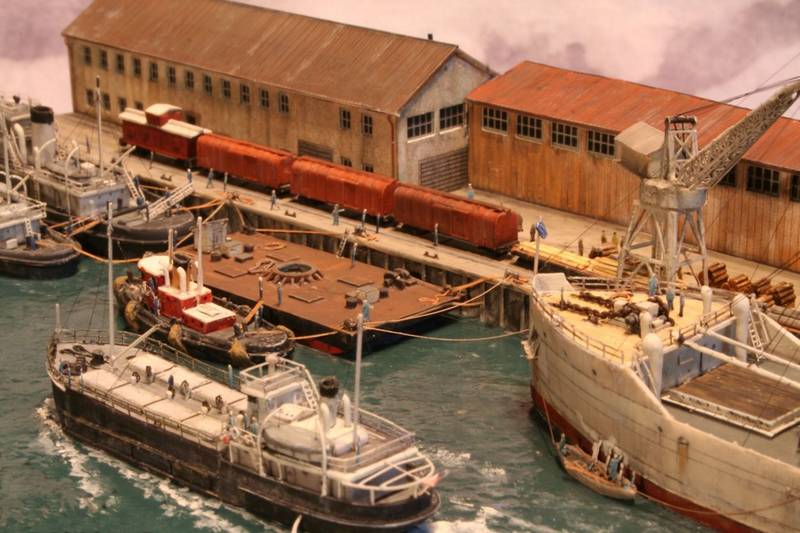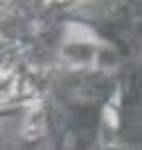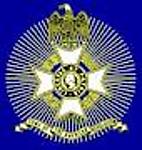You are viewing the archived version of the site.
Go to modelshipwrights.com for the current dynamic site!
Go to modelshipwrights.com for the current dynamic site!
1⁄35Building a USN Port Around a HogIslander
11
Comments

This whole idea came about as a result of being a subscriber to the much lamented brainchild of Dan H Jones, of Plastic Ship Modeller magazine(PSM). In the 1994/4 issue there was a short article and a set of drawings of the WW1 military transport ships, known collectively as the Hog Islanders. The article was written and illustrated by Dan H Jones, a condensation of that article appears below (used with permission):
"America was a late arrival in the First World War and, as with all previous wars, was woefully unprepared. One problem deemed of critical importance by her new allies, the British, was the depredations of the German U-Boats and surface raiders. Merchant ships were the lifeline of the Empire and new tonnage the most urgent need for applying America's production potential and vast manpower pool to the prosecution of the war. With great enthusiasm but with little advanced planning, America committed to a vast production program and boasted of spanning the seas with a "bridge of ships" and darkening the skies with her aircraft.
This however, took time and the full effect of the American mass production potential was just beginning to be felt when the armistice was signed. Overnight, vast and lavish war contracts were canceled and many industries collapsed. One of the more ambitious projects was for the mass production of cargo ships. Yards were created and materials acquired but only a few ships had been delivered when the war ended.
Hog Island, the largest of three new assembly yards, had not finished a single ship. There was still a perceived need to rebuild the merchant marine and the possibility of foreign sales seemed strong, thus the decision was made to complete most of the Hog Island contracts. A shortage of merchant shipping was one of the factors for America remaining neutral for so long. Reasoning was that if America could not transport its own men and material to the battlefield, then America could not fight. Addressing this problem, Congress passed the Federal Shipping Act of 1916.
The act provided for the creation of a new public agency, The United States Shipping Board, to "create a merchant marineadequate for the United States". The Shipping Board was given wide reaching powers, and more importantly, was funded by $50,000,000 to implement its programs. A corporation using both public and private funds was formed.The Emergency Fleet Corp. found that existing American yards were not large or numerous enough to meet the needs so contracts were let to Japan and China. More importantly, contracts were entered into with private companies to form new yards, called "Agency Yards" to expand the building capability.
These would be assembly yards, building prefabricated ships, rather than using traditional methods. One such company, the American International Corp. started by purchasing the New York Shipbuilding Company of Camden, New Jersey. Plans to expand the yard could only go so far due to the limits of available land. Across the Delaware River lies the city of Philadelphia. A little known island, swampy and barren apart from a single abandoned shack, near Philadelphia, called Hog Island, was deemed suitable and was easy to acquire. It faced the Delaware River, offered over two miles of shoreline and the river was deep enough to permit launchings. Soon the island was transformed with a connecting railroad and marshalling yards, thirty slipways, seven fitting out wet docks, a forest of cranes and gantries and a holding basin.
Building the yards and setting up the assembly methods presented tremendous problems for the company and the Shipping Board. Nothing on this scale had ever before been attempted. The concept of building ships in parts and assembling them at a central location was revolutionary, the first time this had been done. There were delays and the costs were enormous. In spite of the coldest winter on record construction proceeded and the first keel of a Type A was laid on February 6, 1918. The first completed hull, the USS Quistconck, was christened on August 5, 1918.Two basic designs were to be fabricated at the yard, both to be collectively known as "Hog Islanders". The Type A design was a cargo carrier and the Type B was designed to transport troops. Both were simple designs geared toward mass production and aesthetic considerations were ignored. The hulls had no sheer and were syrnmetrical from the sides, resulting in some of the uglier ships ever to sail the seas. They were ugly but they were well built and had a good performance in terms of capacity and speed. All were oil fired and were very modern in design except for their silhouette.
The Type B in particular was said to be designed with camouflage in mind because with their lack of sheer, high stern, and the evenly balanced superstructure, submarines would have trouble telling which direction they were going.The Hog Island contract called for 180 ships but with the end of the war, only 122 were completed. The last was completed in January 21, 1921. The Shipping Board now found itself in the shipping business. Over a third of the modern oil fired vessels in it's fleet were Hog Islanders and at first the Board was reluctant to sell them. Private operators petitioned successfully to force sale of these desirable hulls but when they were made available it was at inflated prices. In the postwar boom many owners paid the asking price which turned a nice profit for the Emergency Shipbuilding Corporation. With the shipping slump of 1921 everything changed.
Hog Islanders were still at their original prices, which then represented three times the market rate. Although the Shipping Board did not reduce their prices nor accept proposals of rebates, they did allow strapped owners to return ships to Shipping Board control. Most of the early sales reverted back to Government ownership. In the interest of helping the development of the American Merchant Marine a subsidy scheme was then created whereby an owner could bid on an established route and be compensated by Federal funds and be allowed a very reasonable purchase price for a Hog Islander hull. Many new companies were thus created to operate what would have been otherwise unprofitable routes. Most of the established shipping companies also took advantage of this scheme and the Hog Island type became a very important element in the between-the-wars merchant marine.
Most of the ships were still around in WW II and did the job they were designed for one war earlier. The hospital ship USS Samaritan was unmistakably a Hog Islander, her silhouette was unaltered apart from her markings. Others served in their intended roles as cargo and troop transports."
Comments
Jim another master piece, I love how you have done the water and the little bits like the two row boats tied up.
I could look at this all night.
Ciao
Luciano
JUL 04, 2007 - 03:52 AM
Having seen this little gem LIVE, I can only say that it is a wonderfull little diorama, packed with action!
But than, it's Jim Baumann's stuff...
Congrats Jim and good job Mark
Skipper
JUL 04, 2007 - 04:30 AM
Hey all,
Great work there. Maybe if I can get the builds right I might try a dio but I think it will be a few months before I give that a try......very little artistic ability here...lol
JUL 04, 2007 - 07:07 AM
The physical size of the individual pieces truly amazes me. . .the detail and precision are phenomenal! I can look at this little gem for hours!!
~Gunny
JUL 04, 2007 - 10:49 AM
This is one of my JB favourites, as well as all the others! and it shows what you can do with a number of smaller ships, and docks, and buildings to tell a story. It makes it difficult now to build just a single ship.
Well done Battle Fleet Models for supplying these little gems.
Peter F
JUL 04, 2007 - 08:04 PM
Holy Smokes! That is incredible. Gotta love all the stuff going on and the craftsmanship is amazing. Yep, JB is a master craftsman.
JUL 05, 2007 - 02:54 AM
Good read, Great models, fantastic dio! So much activity in a small place.
JUL 05, 2007 - 04:26 AM
As usual with Jim's stuff, there is some kind of haze around the diorama, not to mention this incredible level of fine details, I really like it -good bit of writing too!
JB
JUL 07, 2007 - 12:06 AM
Copyright ©2021 by Jim Baumann. _OPINIONS Model Shipwrights, KitMaker Network, or Silver Star Enterrpises. Images also by copyright holder unless otherwise noted. Opinions expressed are those of the author(s) and not necessarily those of Model Shipwrights. All rights reserved. Originally published on: 2007-06-28 00:00:00. Unique Reads: 7910













